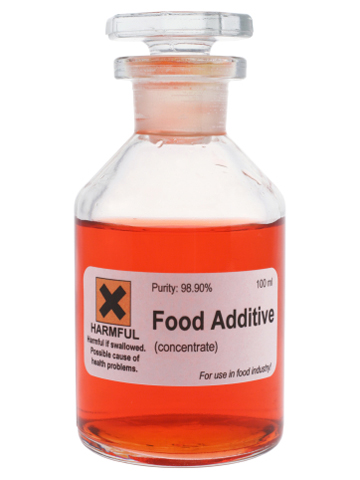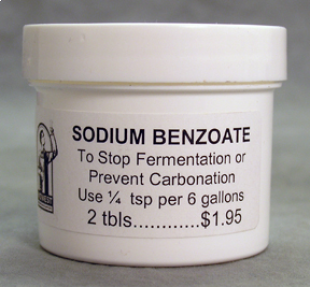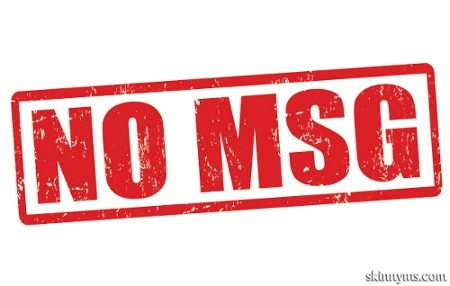- in Healthy Living by Jen Moore
Chemicals in Food – Part 3

Image by theecologist.org
This is the last part in the series of Chemicals in Food. Be sure to read Part 1 and Part 2 here:
More...
7. Sodium Benzoate (benzoic acid) and Potassium Benzoate
Used for: Flour Improver
To increase the volume of bread and improve its
crumb quality
Prevent the growth of microorganisms in acidic
foods (a food preservative)
Why are Sodium Benzoate and Potassium Benzoate Dangerous And Side Effects
Sodium Benzoate actually occurs naturally at low levels in certain foods like cranberries, cinnamon and cloves, and other plants and animals. Bromate usually breaks down to form bromide, which is of no concern to our bodies.
What’s the problem, then? It’s the bromated that has been shown to cause cancer in animals. Small amounts of bromate may remain in the bread/baked goods, and therefore pose a risk to the humans that consume it.
Bromate has been banned in most countries, with the exception being Japan and the United States. In California products using bromated are required to carry a warning label on them. Thankfully since the Center for Science in the Public Interest put pressure on the FDA to ban it, many bakers have stopped using it.
Sodium benzoate may be safe for many people, but there is solid evidence that for sensitive individuals reactions of hives and asthma are likely to occur.

Image by bestontop10.blogspot.ca
Unfortunately, when sodium benzoate is used in conjunction with ascorbic acid (such as in beverages), a reaction with the bi-product of benzene can occur. Benzene has been shown to cause leukemia and other cancers. This risk has been shown to be very small, but still – if there’s no need to expose people to the risk, then its use is pointless.
There was actually a lawsuit in 2006 that forced soda-makers to re-formulate their beverages that used ascorbic acid and benzoate together, long after the FDA had urged companies to do so.
Common foods Sodium Benzoate and Potassium Benzoate are found in:
- White bread
- Buns, and rolls
- Carbonated drinks
- Acidic foods such as salad dressings and condiments
- Animal food additive
- Preservative in medicines and cosmetics
8. MSG (Monosodium Glutamate)
Used for: Flavor enhancer
This amino acid brings out the flavor in many foods, allowing companies to reduce the amount of real food in their product. The L-glutamate form of MSG confers the same umami taste of free L-glutamate that is naturally found in foods.
Why is MSG (Monosodium Glutamate) Dangerous And Side Effects
MSG is actually a non-essential amino acid. Sounds harmless. The L-glutamate form brings out the umami taste in foods. Before even bringing up health questions, I can mention that MSG has long been used by companies to bring out the flavour in foods. What this does? It allows companies to use less of the real product in the food. (i.e. less chicken in your chicken-flavored noodles). Nice going.

Back in the 1960's studies showed that MSG fed to infant mice (in large amounts) destroyed nerve cells in their brains. That study successfully elicited a movement to force baby-food companies to stop its use. Latter studies have shown that some people (not all) are sensitive to MSG, creating allergic-like reactions that include headache, nausea, etc.
Common foods MSG (Monosodium Glutamate) is found in:
- Canned Soup
- Salad dressing
- Chips
- Frozen entrees
- Restaurant foods.
Note: It rarely appears as "MSG" on the package. MSG's international identifying number is E621.
9. Polysorbate 60, 65 and 80
Used for: Emulsifier and preservative that keeps baked goods from
going stale
Coffee whiteners dissolving in coffee
Keeping oil from separating out of whipped cream
Why is Polysorbate Dangerous And Side Effects
In general, Polysorbate 80 is well-tolerated by most. However, like some of the other substances mentioned here, a small number of people appear sensitive to it. This seems particularly true in the case of people with Crohn’s disease, in which it may not just be a sensitivity, but actually harmful.
Common foods Polysorbate 60, 65 and 80 found in:
- Baked goods
- Frozen desserts such as some ice creams
- Imitation cream such as artificial whipped cream
10. Sulfites
These include Sodium Sulfite, Sulfur Dioxide, Sodium Bisulfite,
Potassium Bisulfite, Sodium Metabisulfite, Potassium Metabisulfite.
Used for: Preservative (prevent discoloration in dried fruit and
shrimp, frozen potatoes)
Stops bacterial growth in wine
Why are Sulfites Dangerous And Side Effects
Avid wine drinkers often try to stay away from wines with high sulphur content due to its association with headaches the next day (or sooner) after consuming them. Like some of the above chemicals, sulphur seems to elicit more of a reaction in some, especially asthmatics.
Its levels are now well-regulated after an incidences of death in the 1980's. Restaurants were serving lettuce and potatoes with an extremely high sulphite content because workers were allowing them to sit in a sulphite solution for extended periods of time. As a result the FDA banned a lot of its use and required it to be labelled on wines.
Common foods Sulfites are found in:
- Dried fruits
- Wine
- Processed potatoes
- Sometimes shrimp; not always required on a label
11. TBHQ - Tertiary Butylhydroquinone
Used for: Antioxidant that prevents rancidity, extending shelf life
Also used as
a corrosion inhibitor in bio-diesel
To help keep perfumes from evaporating at an undesirable rate.
Why is TBHQ Dangerous And Side Effects
TBHQ is often used with BHA and BHT in products, and is chemically related to them.
A government study pointed to increased incidence of tumors in rats. High doses also produced negative effects on lab animals such as stomach tumors and DNA damage. At higher doses, it has some negative health effects on lab animals, such as producing precursors to stomach tumors and damage to DNA.Therefore the FDA sets an upper limit of 0.02% of the oil or fat content in foods.
Common foods TBHQ found in:
- Vegetable oil
- Snack foods
- Cereals
- Other fat-containing foods
- Frozen fish
Note: The documentary "Super Size Me" also claimed the usage of TBHQ and other chemicals in fast food. A university professor guest on CNN followed this up by stating its level in McNuggets likely posed no health risk but we should still be weary of the presence of item we wouldn’t cook with at home.
12. Potassium Sorbate
Used for: Food preservative
To inhibit molds and yeasts
Why is Potassium Sorbate Dangerous And Side Effects
Potassium sorbate is the salt of sorbic acid. It is actually naturally occurring in some berries, but nearly all of the world’s supply of sorbic acid is manufactured synthetically. It appears to have a long-time safety record, but can be a skin, eye, and respiratory irritant to some. Due to studies that found it to be toxic to DNA in peripheral blood lymphocytes, it is hypothesized to negatively affect immunity.
The other question is whether its use together with ascorbic acid and iron salts (commonly done) form compounds that can damage DNA molecules. Prolonged use as a preservative seems to show the same effects as that of table salt: allergic reactions, diarrhea, nutrient loss in the food, eye or skin irritation, and rashes.
Common foods Potassium Sorbate is found in:
- Wine
- Cheese
- Yogurt
- Dried meats
- Apple cider
- Juices
- Baked goods
- Herbal dietary supplements
- Vanned foods,
- Some personal care products
- Sometimes used in the preparation of items such as milk shakes served in fast food establishments
I really can’t iterate enough:
Read your Labels!
My personal motto: If I wouldn’t cook with it at home, I won’t buy it.
That’s the line I draw between making things myself and buying. I make ice cream at home. It’s creamy and delicious without the use of polysorbate.
Some of these additives do seem to have very low cause for concern after rigorous testing, but why expose yourself to potential irritants? The least you can do is be informed and choose for yourself what line you’ll draw.
- Simple Potato Soup Recipe - April 10, 2015
- Steamed Whitefish With Fig Leaf Recipe - April 10, 2015
- Oatmeal Pancake Recipe - February 6, 2015

